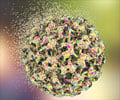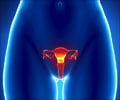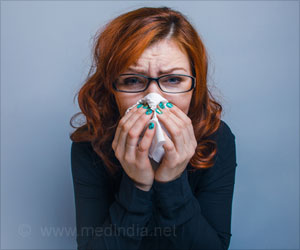An analysis was made on the adverse events reported following distribution of quadrivalent human papillomavirus recombinant vaccine since 2006.
An analysis was made on the adverse events reported following distribution of quadrivalent human papillomavirus recombinant vaccine since 2006.
The analysis indicates that adverse event rates were consistent with pre-licensing data and expected background rates of other vaccines, with the exception of a higher proportion of reports of fainting and blood clots, according to a study in the August 19 issue of JAMA.In June 2006 the Food and Drug Administration (FDA) licensed the quadrivalent human papillomavirus recombinant vaccine (qHPV) for females age 9 to 26 years to prevent infection with genital human papillomavirus (HPV) types 6, 11, 16, and 18. Shortly after that, the Advisory Committee on Immunization Practices (ACIP) recommended routine vaccination of females age 11 to 12 years with 3 doses of qHPV and catch-up vaccination for females age 13 to 26 years. Doses are administered on a schedule of 0, 2, and 6 months, according to background information in the article. "The viruses HPV-16 and HPV-18 can cause cervical cancer, other anogenital cancers, and precancerous or dysplastic [abnormal development of cells or tissue] lesions and are responsible for about 70 percent of cervical cancers worldwide. The viruses HPV-6 and HPV-11 are the most common causes of genital warts," the authors write.
Prior to licensing, clinical trials were conducted with more than 21,000 women. The incidence of clinical adverse events following immunization (AEFIs) was similar in the vaccine group (59 percent) and the placebo group (60 percent), and the rates of serious AEFIs were comparable between the two groups (less than 0.1 percent). "With more than 23 million qHPV doses distributed in the United States as of December 31, 2008, postlicensure safety monitoring can detect AEFIs too rare to have been detected during prelicensure trials," the researchers note.
Barbara A. Slade, M.D., M.S., of the Centers for Disease Control and Prevention, Atlanta, and colleagues analyzed reports of adverse events following qHPV immunization received by the U.S. Vaccine Adverse Event Reporting System (VAERS; a national, voluntary, surveillance system) from June 1, 2006, through December 31, 2008. Additional analyzes were performed for some AEFIs in prelicensure trials, those of unusual severity, or those that had received public attention.
During the study period, VAERS received 12,424 reports of AEFIs following receipt of qHPV, an overall reporting rate of 53.9 reports per 100,000 vaccine doses distributed. Of the 8,247 reports that included onset interval, 4,393 (40 percent) occurred on the day of vaccination. Among 9,396 reports (77 percent) with dose information, 5,772 (61 percent) followed the first dose, 2,380 (25 percent) followed the second dose and 1,183 (13 percent) followed the third dose of qHPV.
Among the 12,424 AEFI reports, 772 (6.2 percent) were serious, including 32 reports of death. The reporting rates per 100,000 qHPV doses distributed were 8.2 for syncope (fainting); 7.5 for local site reactions; 6.8 for dizziness; 5.0 for nausea; 4.1 for headache; 3.1 for hypersensitivity reactions; 2.6 for urticaria (skin rash); 0.2 for venous thromboembolic events (blood clots), autoimmune disorders, and Guillain-Barre syndrome (disorder in which the body's immune system attacks part of the peripheral nervous system); and 0.1 for anaphylaxis (hypersensitivity reaction to a substance) and death. Analysis indicated a disproportional reporting of fainting and blood clot events.
Advertisement
Available pre-embargo to the media at http://www.jamamedia.org
Advertisement
Editorial: The Risks and Benefits of HPV Vaccination
In an accompanying editorial, Charlotte Haug, M.D., Ph.D., M.Sc., of The Journal of the Norwegian Medical Association, Oslo, Norway, comments on the safety of the HPV vaccine.
"Whether a risk is worth taking depends not only on the absolute risk, but on the relationship between the potential risk and the potential benefit. If the potential benefits are substantial, most individuals would be willing to accept the risks. But the net benefit of the HPV vaccine to a woman is uncertain. Even if persistently infected with HPV, a woman most likely will not develop cancer if she is regularly screened. So rationally she should be willing to accept only a small risk of harmful effects from the vaccine."
Available pre-embargo to the media at http://www.jamamedia.org
Editor's Note: Please see the article for additional information, including financial disclosures, funding and support, etc.
Source-Eurekalert
ARU












